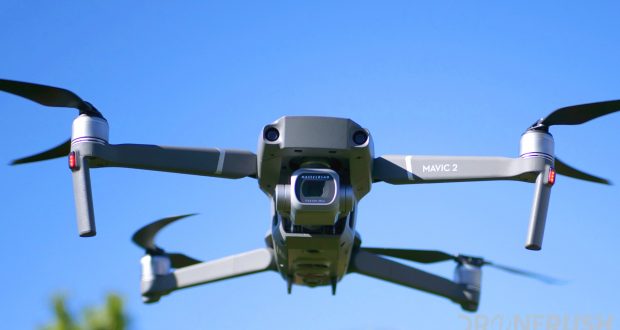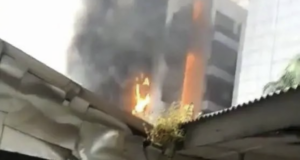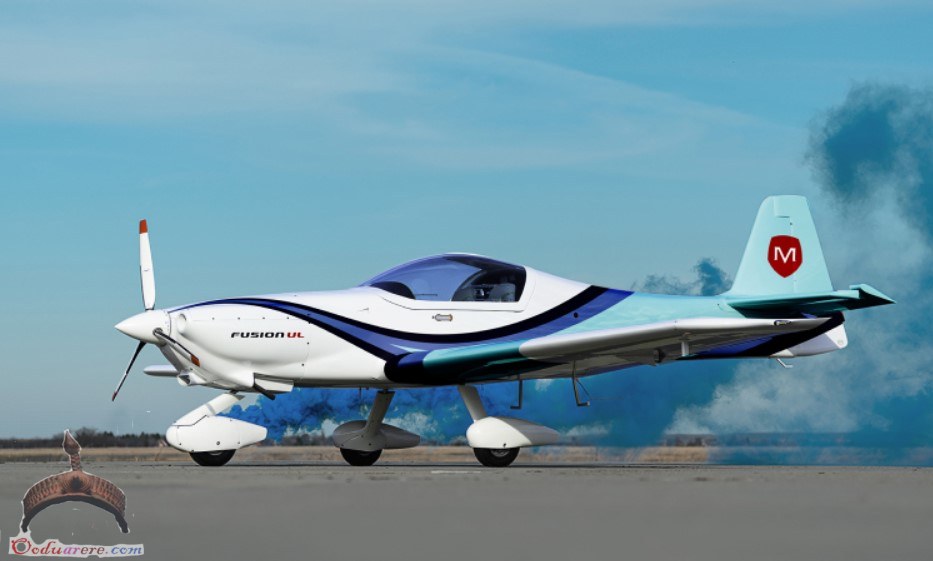DJI Mavic 2 Pro; DJI’s Mavic family has all but replaced its Phantom series for consumer drone use. Mavic drones are smaller throughout, and foldable for easier storage and transport. The top-end model, the Mavic 2 Pro ($1,729), has the biggest image sensor we’ve observed in a drone this size. Which means images and video both look much better than other drones, like the Pro’s near twin sibling, the Mavic 2 Zoom.
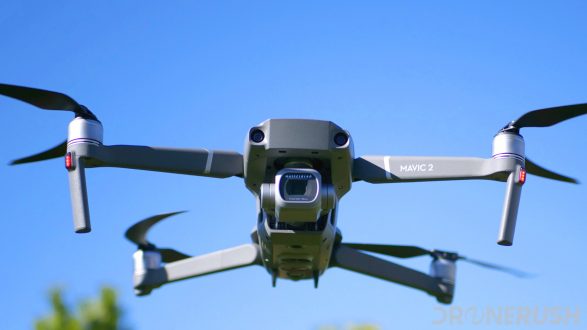
The Pro is a bit more expensive, by $250, but we think the upgrade in image and quality may be worth the added cost. The Mavic 2 Pro is the greatest drone for enthusiast pilots, and our Editors’Choice.
Editors’ Note: The price of the DJI Mavic 2 Pro reduced from $1,729 to $1,599 in 2020.
The Best Folding Drone
The DJI Mavic 2 Pro takes its design cues from the original Mavic Pro, but is really a little bigger all around. It measures 3.3 by 3.6 by 8.4 inches (HWD) folded and 3.3 by 9.5 by 12.7 inches with it arms extended. Unfolding the drone is pretty easy, you have to make sure to swing the leading arms out before the underside ones. The aircraft weighs about 2 pounds, heavy enough to require FAA registration when flying recreationally in the US.
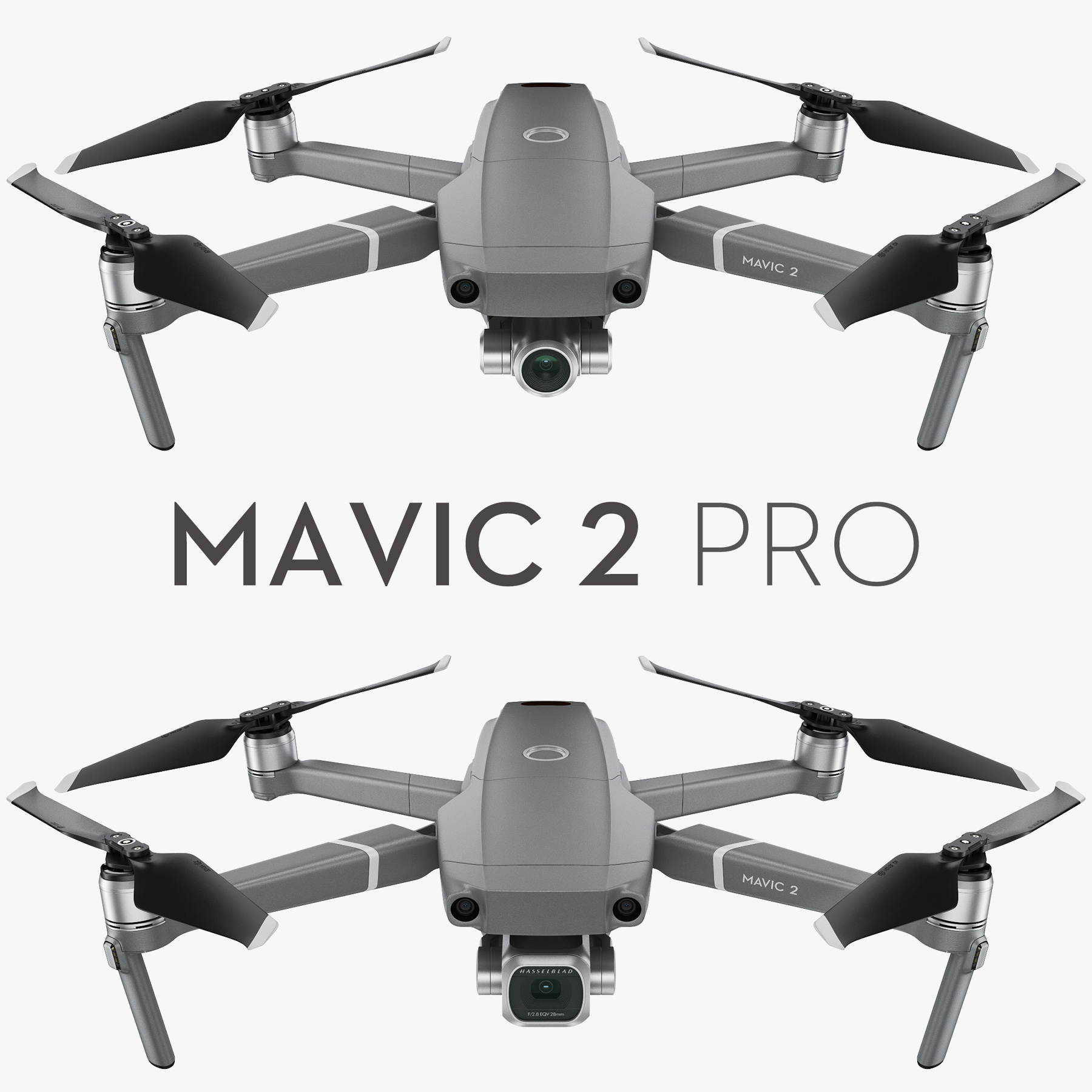
Despite being truly a bit bigger compared to the original Mavic and the more recent Mavic Air, the Mavic 2 Pro remains quite portable. It fits nicely in a camera bag, taking on a comparable space as a normal 70-200mm f/2.8 zoom lens. You will have to create a bit more space for the handy remote control, charger, and any extra batteries you get, however you won’t need to dedicate a backpack to the Mavic as you do with the Phantom design.
DJI is splitting the Mavic 2 line into two models—the Pro, which we’re reviewing here—and the Zoom, that includes a 2x optical contact, but a smartphone-sized 1/2.3-inch, 12MP image sensor. Dji Mavic 2 Pro leaps ahead with a 1-inch sensor, about four times how big the imager behind the Mavic 2 Zoom’s lens. The more bigger area enables more image resolution (20MP), and higher-quality video.
The included handheld remote control resembles what you get with other Mavic models. It’s gray, with a brief, changeable cable to connect to your smartphone, which mounts below the controller. Two clips hold your phone—they’re big enough to allow for a tablet and are designed for a slender phone case, but you will need to take your phone out of its case if you use a large one. There’s a cutout on the left clip, to help you access your phone’s home button while it’s mounted in the remote. Cables are included for phones that use Lightning, micro USB, and USB-C ports.
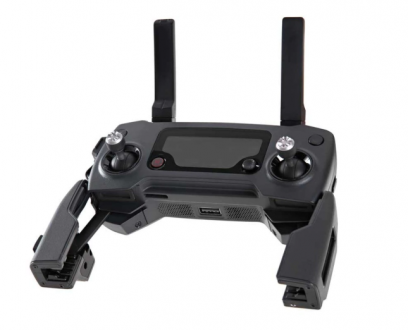
The remote features a monochrome display—it shows battery status, telemetry data, and other information. It’s possible to fly the Mavic 2 with no phone attached, but you may need an Android or iOS device and the DJI Go 4 app to activate the drone before your first flight. We don’t recommend flying with no phone, though, as you won’t get to see the view through the camera without one.
As well as the flight sticks—which are removable for storage—the remote includes dual control wheels and buttons at the shoulders. The left wheel tilts the camera up and down, while the right brightens or darkens the exposure, and the buttons are accustomed to snap a photo or begin a video.
The remote also features a switch to alter flight modes on its side, a separate button to activate the Mavic’s return-to-home feature, and a Pause button to freeze the drone in place. There’s also a tiny four-way controller—it may be used to point the camera straight ahead or straight down. Two programmable control buttons, on the rear, round things out.
The Mavic 2 Pro is rated for 31 minutes of flight on a complete battery charge. That number is on the basis of the timeframe the drone can hover set up, so expect a couple of minutes less life in reality. Our tests netted on average 27 minutes—that’s still a lot of time in the air, better compared to the 23 minutes the initial Mavic Pro netted during our flights.
You would expect a $1,500 drone to add an obstacle avoidance system, and the Mavic 2 doesn’t disappoint. It’s sensors in all direction. In many flight modes the forward, rear, upward, and downward sensors are active all the time, stopping the drone set up if an obstacle is detected. Switching to ActiveTrack, where in fact the Mavic identifies and tracks a moving subject, enables the medial side sensors.
In addition they work in Tripod mode, a low-speed setting that lets photographers move the drone very slowly to raised frame shots. The Mavic 2 also includes a high-speed Sport setting. It ups the most flight speed from around 32mph to just shy of 45mph. All obstacle sensors are disabled when Sport is switched on, so utilize it with care.
DJI has begun to include internal storage to its drones—we first found it with the Mavic Air. The Mavic 2 Pro matches the Air’s 8GB capacity, and includes a microSD card slot too. The card slot is essential, as 8GB isn’t room enough to put up plenty of video. The Mavic 2 shoots 4K footage at 100Mbps, so you will end up restricted to only a little less than 15 minutes of footage in internal memory. I’d have like see at the very least 16GB added to a design that calls itself Pro. Still, memory cards aren’t expensive, and having some internal storage means you won’t be left in the cold in the event that you forget to pack a card.
DJI Go 4 App and Features
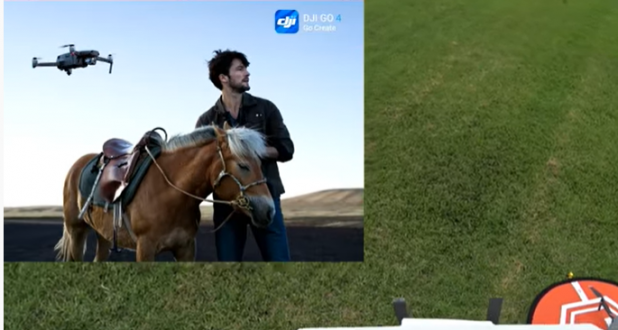
Much like other DJI drones, the Mavic 2 Pro works together the DJI Go 4 app, available as a totally free download for Android and iOS devices. The app does plenty of things, but most of all it offers you control on the drone’s camera and shows its perspective at 1080p quality. In addition it shows a chart of the planet, inlaid in the video feed, which you may swap to if you want to ascertain the Mavic’s position in relative to you.
The app can also be where you go to get into automated shots, or enter in to a special capture mode, like Hyperlapse. Essentially a time-lapse with motion, Hyperlapse is just a fun way to fully capture sped-up views of the world. I’m not really a big fan of how DJI has implemented the knowledge, though—the remote makes a clicking noise everytime the drone adds a frame, and the flight speed is slowed up a bit. Your mileage can vary, but I’d certainly choose to see a clean view from the camera, without audible distractions, like you receive with the Hyperlapse mode on the less expensive Parrot Anafi.
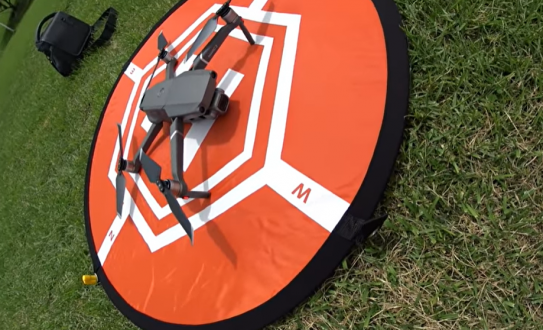
As well as Hyperlapse, there are many of other automated flight modes and options. They include Asteroid, which mixes panoramic imaging and video to show a standard view of the entire world in to a Little Planet projection, which we first saw with the Mavic Air. Additionally it supports TapFly, which enables you to fly the drone by tapping your phone’s screen, ActiveTrack, and APAS. The latter—the Advanced Pilot Awareness System—is helpful for flights when you find so many obstacles to navigate around. It will slow the drone down, however when enabled it automatically flies around any obstacles it encounters.
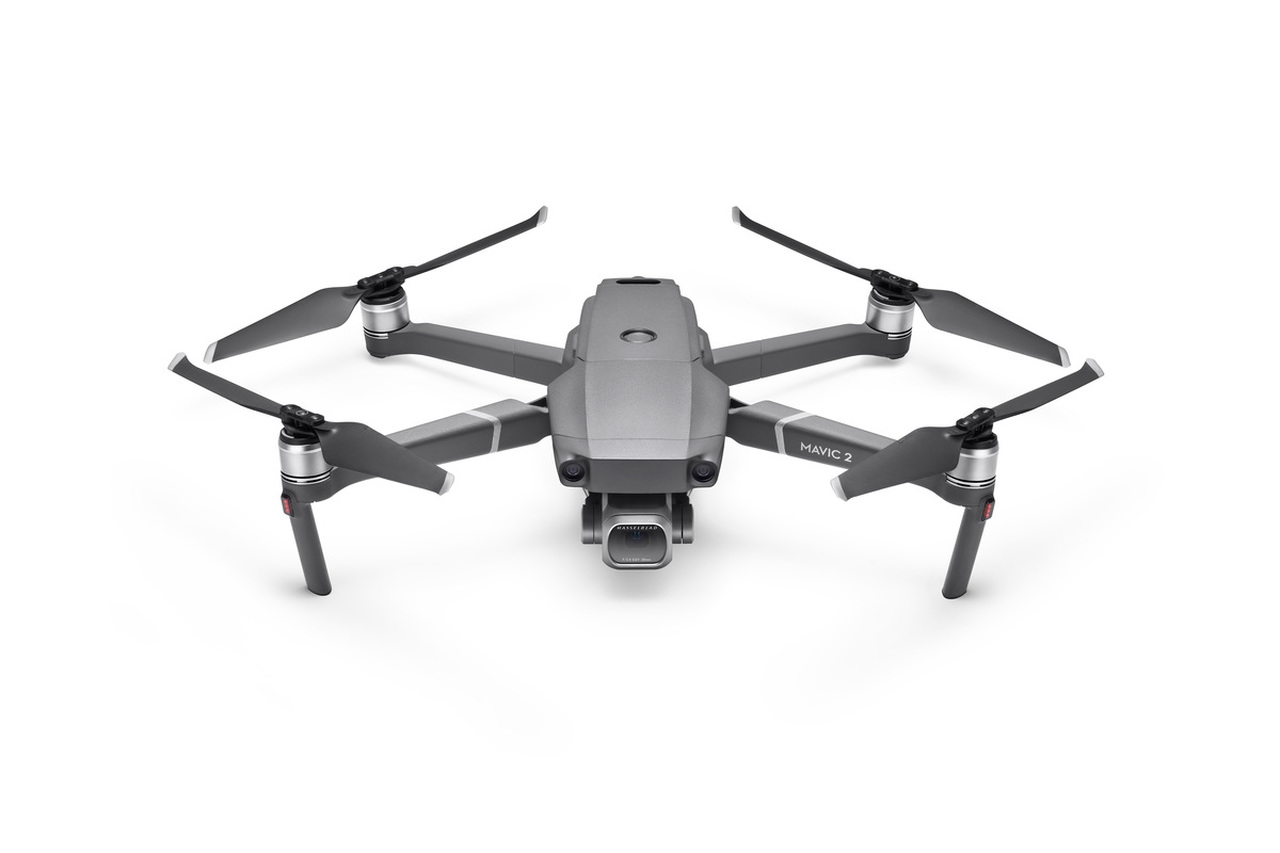
The app even offers some safety features. It works together with the drone’s GPS to enforce no-fly zones, such as the permanent one across the White House and temporary bans of drones around areas where aerial firefighting is happening, both of which could help keep you out of trouble. When you have an FAA Part 107 commercial license, you can even utilize the app to authorize flights near airports, helping you save the problem of contacting the control tower directly. Firmware updates, which may be frequent with DJI products, are done using the app.
DJI Mavic Pro 2 Superlative Video and Images
The DJI Mavic Pro 2 delivers the best drone footage and images you will get in a tight form factor. To raised it, you will need to take into account moving up to big, expensive aircraft by having an SLR-sized sensor and changeable lenses, like the DJI Inspire 2.
The main reason its footage is crisper than other 4K drones may be the sensor size. Most drones make use of a 1/2.3-inch sensor, similar to what you get with a smartphone. However the Mavic 2 Pro works on the 1-inch imager, about four times big is what you get with the Mavic 2 Zoom, Mavic Air, and other folding drones.
It’s not the first time DJI has used the sensor size in a drone—additionally it is for sale in the larger Phantom 4 Pro and Phantom 4 Advanced models. They’re both still available and do offer some advantages—notably support for the wider 4K DCI format. But when you’re fine with UHD, you will find the Mavic to incorporate a lot of DJI’s more recent innovations—including better made automated shots and APAS—that aren’t for sale in the Phantom series.
What you do get is 4K UHD footage at 100Mbps, with picking a H.264 or H.265 compression. You are able to shoot ready-to-edit footage with a regular color frame—DJI has leveraged color science tech from its partner Hasselblad for the Mavic 2 Pro’s camera. Our test footage was all shot with the default color profile.
You can also choose an alternative, baked-in profile if you want your video to really have a more artistic, filtered look, or you want to shoot with the flat, low-contrast Dlog-M profile. Shooting flat offers you more power to color correct—Dlog-M is a 10-bit format. It’s only recommended for serious video pros, however, as you will be needing both software and skill to create Dlog-M footage pop. In addition it supports HDR video, utilizing the Hybrid Log Gamma (HLG) profile.

You will find numerous frame rates available. For 4K you obtain 24, 25, or 30fps. Dropping resolution to 2.7K adds 48, 50, and 60fps, and you obtain all the aforementioned at 1080p (2K), with the addition of 120fps. The lens includes a variable aperture, configurable from f/2.8 through f/11, and the sensor can range between ISO 100 to 6400 for video. You’ll probably want to incorporate a basic density filter for flights in bright light—I don’t recommend using the lens at a location narrower than f/5.6 to minimize the resolution loss brought on by diffraction—but when you’re without one, you are can certainly stop down further to keep proper shutter angles for the footage.
Additionally, there are two angles of view to select when shooting at 4K. DJI doesn’t do a good job identifying them in the app, which is a shame as it effectively provides Mavic 2’s camera an identical coverage range whilst the Mavic 2 Zoom for 4K video. The default setting, FOV, is a wide-angle view of the entire world, about 28mm in full-frame terms. Switching to the HQ (High Quality) setting narrows the camera’s angle a bit—it’s nearer to 40mm. That you do not get quite exactly the same range whilst the Mavic 2 Zoom’s camera (24-48mm), but it’s close enough. You do lose the capability to execute a dolly zoom shot, but it appears as though a good price to cover better video overall.
Imaging can also be quite versatile. We have seen the 1-inch sensor size find a place in compact cameras, where it delivers better results than you are able to expect from your own smartphone. The Mavic 2 Pro shoots images in JPG or Raw DNG format, and I would expect most serious photographers to utilize the latter. The big sensor makes low-light aerial imaging a less strenuous task, by having an ISO that may be set as high as 12800 when creating images. I often recommend ISO 3200 as a maximum for this sort of sensor, however, that will still net some stunning twilight photos.
The Best Small Drone

Will there be a far more capable folding drone compared to the DJI Mavic 2 Pro? I don’t think so. It is small enough to get space along your terrestrial imaging and video equipment in a backpack, nonetheless it does not make plenty of sacrifices in comparison to larger drones. Assuming that you do not have to shoot footage destined for projection in a theatre, the 4K UHD format (the one utilized by your TV) is plenty of for almost any project destined to be considered in a Tv room.
Couple the quality with the capability to record footage at dual angles of view, excellent still imaging, and the incredible stabilization delivered by the Mavic 2’s gimbal stabilization, and you have got a drone that is simple to love. Yes, you spend a higher cost, however the Mavic 2 Pro is the better folding drone we have flown, so it is our Editors’Choice of drone. A must have!
 Ọmọ Oòduà Naija Gist | News From Nigeria | Entertainment gist Nigeria|Networking|News.. Visit for Nigeria breaking news , Nigerian Movies , Naija music , Jobs In Nigeria , Naija News , Nollywood, Gist and more
Ọmọ Oòduà Naija Gist | News From Nigeria | Entertainment gist Nigeria|Networking|News.. Visit for Nigeria breaking news , Nigerian Movies , Naija music , Jobs In Nigeria , Naija News , Nollywood, Gist and more

